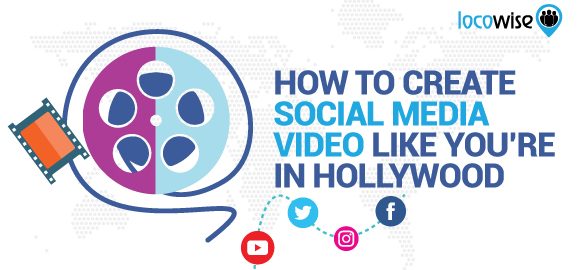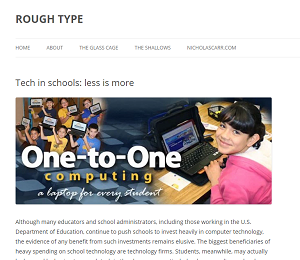We won’t waste time here talking about how important video is on social media. You know this, and you know it has been a major part of social for years now. But there is one aspect of video creation that any social media agency or brand could really learn from. And that’s Hollywood.
Okay, your next video creation will not be of blockbuster standard, but we’re talking about something else, something other than production values. We are thinking about creating videos that have excellent structure. Videos that have a classic structure that all but guarantees people will enjoy them. And share them.
Try the following ancient ways to tell stories, and think about how you can utilise this knowledge in your next video. Chances are, implementing these theories will make your video content even more engaging.

Dale and his formula
This is going right back to basics. Dale Carnegie was a rather wealthy man, and a big part of the USA’s capitalist heritage. But in amongst all of that wealth he also had some great ideas on how businesses could tell stories.
His biggest and most famous publication was ‘How to Win Friends and Influence People’. And when you think about it, social media brands are trying to win ‘friends’ all the time so Dale’s ideas could not be more appropriate.
What did he suggest? Well, to have any success in influencing (again, quite a strong theme as social becomes even more important) clients, you must:
●Share a relevant personal experience.
●Describe the action or product that solves the problem outlined in step one.
●Describe the benefits of what happened in step two.
Problem, solution, benefits. Nothing new, you may say. But some brands and agencies creating video could enjoy the process more if they thought about these ideas, we think.
The Why
Video has a lot of benefits. You can read a short text ad by Apple and feel pretty okay. But when Apple decides to pull out the big guns, it means there is emotion, and lots of it.
Apple has a particular knack of explaining itself clearly. Why it exists, and why it does what it does. And of course, the feeling that comes from it. Again, this is all classic marketing, but Apple has done it very well for a number of years.
The basic formula:
●Tell the viewer why the company exists.
●Tell them how it continues to fulfill the ‘why’.
●Show them what that feels like.
The best (and most poignant) ad for this is here. Plenty of Apple sentiment and the three step process above is clear. And yes, it’s extra poignant for the voiceover supplied by Robin Williams, who died the same year it aired.
A heart has strings, right?
This is where the real emotional stuff comes in. Many people are aware of the traditional story where a hero goes through major challenges before finding his or her way out and learning a valuable life lesson. Brands can take this concept and dial it all the way up to 11 with a sentimental and emotional approach.
This formula is perhaps one of the most effective at engaging an audience, simply because it grabs them through a quick establishing of emotions. The idea here is to tell a powerful, evocative story from the start.
The structure:
●Bring the character to the attention of the audience
●Take that character to the point where he/she/it is at their most desperate stage, the lowest point of their journey. This is where the emotions come into play
●Give the audience a happy ending
Marketing has always relied on emotions to move things forward towards engagement. This particular formula is in use every day. You’ll find a video that taps into this particular vein of humanity and its struggle if you head on out and search social media now.
For a very clear and very effective version of this kind of approach click here. This story was turned into a movie as well, which shows just how powerful and touching it is.
What Google did here was take a very human story with an affecting and potentially tragic ending, and make it into a powerful marketing piece. But it doesn’t seem cynical (although it could have looked that way). Google also score extra points here for including some of that ‘why’ stuff that Apple had. It’s subtle, but you start to realise towards the end why Google has worked hard to place itself where it is in the world. It’s a perfect mission statement. But the whole thing is very carefully rested on the supports of that simple, clear structure.
The story formula from great storytellers
Our final structure comes from a brand that has perfected the art of storytelling. And it is quite fitting that these guys have won Oscars for their craft. Yep, we are not talking about a brand that has experimented and got lucky. This brand’s storytelling wins the big prizes.
But Pixar has a lot to tell us about the craft that goes into great episodes of moving images. Sequencing is their bread and butter. They know how to take the audience on a journey.
The storyboard artist Emma Coats once shared what she felt was the reason behind Pixar’s success. She shared this stuff a number of years ago, but every one of the 22 ‘secrets’ is valid for any brand today wanting to make video that works on social media:
●You admire a character for trying more than for their successes.
●You gotta keep in mind what’s interesting to you as an audience, not what’s fun to do as a writer. They can be v. different.
●Trying for theme is important, but you won’t see what the story is actually about til you’re at the end of it. Now rewrite.
●Once upon a time there was ___. Every day, ___. One day ___. Because of that, ___. Because of that, ___. Until finally ___.
●Simplify. Focus. Combine characters. Hop over detours. You’ll feel like you’re losing valuable stuff but it sets you free.
●What is your character good at, comfortable with? Throw the polar opposite at them. Challenge them. How do they deal?
●Come up with your ending before you figure out your middle. Seriously. Endings are hard, get yours working up front.
●Finish your story, let go even if it’s not perfect. In an ideal world you have both, but move on. Do better next time.
●When you’re stuck, make a list of what WOULDN’T happen next. Lots of times the material to get you unstuck will show up.
●Pull apart the stories you like. What you like in them is a part of you; you’ve got to recognize it before you can use it.
●Putting it on paper lets you start fixing it. If it stays in your head, a perfect idea, you’ll never share it with anyone.
●Discount the 1st thing that comes to mind. And the 2nd, 3rd, 4th, 5th – get the obvious out of the way. Surprise yourself.
●Give your characters opinions. Passive/malleable might seem likable to you as you write, but it’s poison to the audience.
●Why must you tell THIS story? What’s the belief burning within you that your story feeds off of? That’s the heart of it.
●If you were your character, in this situation, how would you feel? Honesty lends credibility to unbelievable situations.
●What are the stakes? Give us reason to root for the character. What happens if they don’t succeed? Stack the odds against.
●No work is ever wasted. If it’s not working, let go and move on – it’ll come back around to be useful later.
●You have to know yourself: the difference between doing your best & fussing. Story is testing, not refining.
●Coincidences to get characters into trouble are great; coincidences to get them out of it are cheating.
●Exercise: take the building blocks of a movie you dislike. How d’you rearrange them into what you DO like?
●You gotta identify with your situation/characters, can’t just write ‘cool’. What would make YOU act that way?
●What’s the essence of your story? Most economical telling of it? If you know that, you can build out from there.
We’ve covered all of her points here because all of it makes sense for any brand that wants to tell a visual story (or a text story for that matter). Take a look at each one and see how it can enhance the storytelling you come up with in your next social video.
The point of all this is that you don’t need incredibly large budgets to engage an audience with a video. What you do need is a good structure. And then, to ensure that you have something that is powerful, engages, and leaves a mark with your audience, just take a quick run through Emma Coats’ list above. If you’re doing that kind of stuff, we think your video is something special.
Obviously, test out the engagement of your video and make metrics the bedrock of the campaign. You won’t (probably) get it right first time with video on social, but with the waypoints in this post, it won’t be long before you strike gold.
Digital & Social Articles on Business 2 Community
We love metrics. We live metrics. If you want the most amazing and life-changing metrics platform around, try Locowise free for 7 days. All free for a week. Imagine what you could do.
(35)






